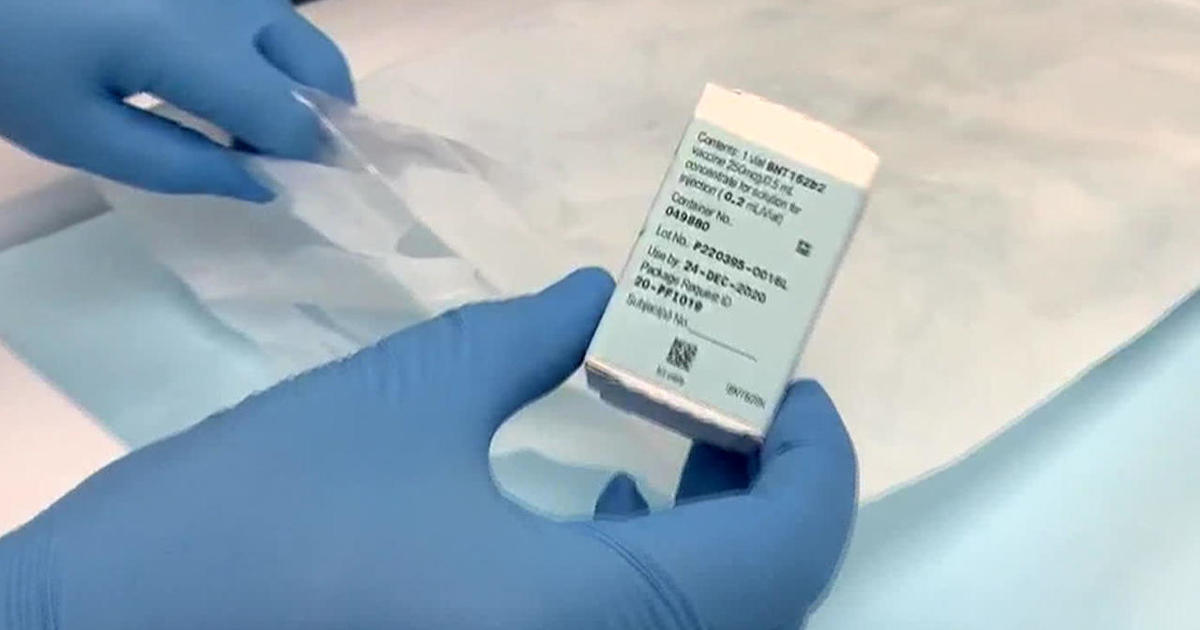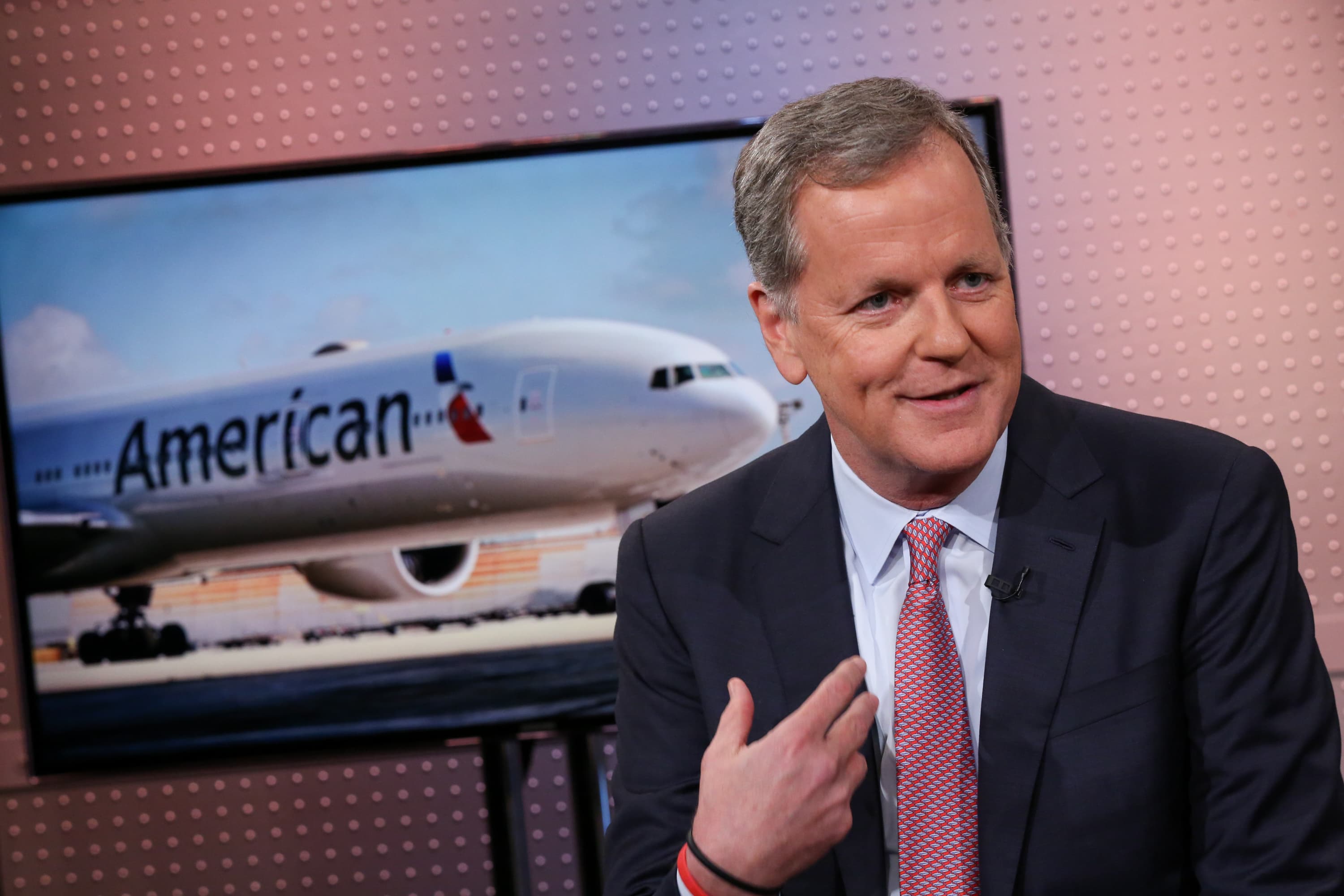
Even if all goes according to the federal government's plan for rolling out a coronavirus vaccine, many jurisdictions will initially receive just a fraction of the doses they'll need to cover their health care workers.
For example, the Minneapolis-St. Paul metro area has been told by state officials to expect 19,000 doses, which is enough to fully vaccinate around 9,500 people, since the vaccine calls for a course of two doses taken 21 days apart. A source in the Twin Cities says it needs 57,000 doses just to cover its frontline healthcare workers.
Earlier this week, the nation's governors began to learn the number of doses of Pfizer's COVID-19 vaccine that they should expect to receive when it begins to ship.
In a document obtained by CBS News, officials with the U.S. vaccine effort, dubbed Operation Warp Speed, say they are targeting December 14 as the day by which Pfizer's COVID-19 vaccine will receive emergency use authorization from the FDA. They say 6.4 million doses will be ready to ship within 24 hours of emergency approval.
The number of doses a state receives will be based on its 18-and-older population.
Maine Governor Janet Mills, a Democrat, voiced her disappointment in the number of doses her state would receive in the initial federal allocation of Pfizer's vaccine. The approximately 12,000 doses would cover about 6,000 people, about a third of healthcare workers in the state.
"It's a real concern" because "our healthcare staff here, as everywhere, is really strapped, the healthcare system is kind of breaking down because of the lack of staffing," Mills said on a call with the White House Coronavirus Task Force this week.
On the call, Gustave Perna, CEO of Operation Warp Speed, cautioned the governors that their projected allotment was preliminary and would be finalized when the emergency authorization is granted.
The Moderna vaccine would go out the following week, on December 22, if that vaccine is granted an emergency authorization. It too calls for a two-dose course.
Governors will decide who receives the first doses. An advisory committee to the Centers for Disease Control voted Tuesday to recommend the vaccine first be given to frontline healthcare workers and long-term care facility residents — but for many states, it's either one or the other.
An official in Connecticut said the state is looking at administering the vaccine to long-term care facility residents first because that's where fatalities are most prevalent.
"Our nursing homes have been hit in tragic ways and we believe vaccine deployment to those residents first will have the most life-saving impact," the official said. The state expects to have 100,000 doses by the end of the year, as new shipments of both the Pfizer and Moderna vaccines come in.
There's a catch, though.
Once they receive the vaccine from the federal government, the states are responsible for distribution, a costly endeavor. Many states are relying on funding for state and local aid set up by the CARES Act, but the money expires at the end of the year and Congress has yet to agree on an extension. Officials in five states told CBS News they are worried about the consequences.
"This really should have been done several weeks ago," an official in Utah said of the need for new funding. "The lack of action has caused confusion in the states. With the deadline for spending being December 30, there are going to be substantial costs that are going to be left to the states."
Without new federal funding, officials say there will be fewer vaccination sites, and they will need to rely further on already cash-strapped health systems to administer the vaccine.
"It is crucial that Congress provide financial assistance to support the distribution of the vaccine," said Jackie Farwell of the Maine Department of Health and Human Services. "We are still considering what we would do without that support and planning for all contingencies, but federal funding is vital to the success of this significant undertaking."
Other states are dubious that they'll see another cash infusion from the federal government to help defray the distribution costs.
"We are counting on the feds to supply the vaccine, but not depending on them for additional funding for logistics," said one Virginia official, who then added, "that being said, we would take the money if offered."
Speaker Nancy Pelosi and Senate Minority Leader Chuck Schumer on Wednesday indicated their support for a bipartisan, bicameral coronavirus relief plan that would include aid to state and local governments. It's not yet clear if the White House will support it.
Governor Andrew Cuomo announced that New York would receive an initial delivery of enough initial COVID-19 vaccine doses for 170,000 New Yorkers on December 15 and expects more allocations from Pfizer and Moderna later in the month.
Though the vaccine allocation was "welcome" news, Cuomo criticized the federal vaccination plan because it "not only overlooks the black, brown, and poor communities, but its data sharing provisions will dissuade the undocumented community from getting a vaccination."
Not every state is ready to disclose the projected number of doses it will receive.
"At this time, we have not been given a sound allocation number for reasons including the proposed vaccines have not received emergency use authorization, therefore the safety and effectiveness for different populations have not been identified," Pennsylvania officials said in a statement.
Sara Cook contributed to this report.
Article From & Read More ( Initial vaccine distribution will cover fraction of health care workers - CBS News )https://ift.tt/2JF3VD5
Business

No comments:
Post a Comment